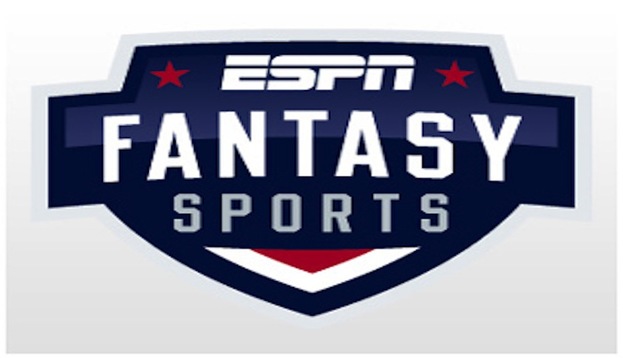
Fantasy Sports started in the sixties when Oakland entrepreneur Wilfred "Bill" Winkenbach founded the original fantasy football league. Since those simple beginnings, this virtual gameplay has surged into a international phenomenon attracting over 60 million competitors in North America alone.
Contemporary enthusiasts can select between year-long leagues that replicate professional sports calendars or day-by-day contests providing instant satisfaction through quick-play formats. Each style attracts distinct competitor styles, with diverse levels of involvement and strategy needs.
Throughout this all-inclusive resource, first-timers will discover essential principles while experienced managers get advanced tactics to win their leagues. Whether you're assembling your introductory team or chasing that league-winning edge, these insights will transform your fantasy approach.
Understanding Fantasy Sports?
Fantasy Sports permit players to assemble virtual teams using professional athletes whose real-world statistical performances transform into points within a game-based framework. These virtual contests create mirrored competitions where understanding, planning, and sometimes luck shape outcomes.
NFL football rules the fantasy landscape, but basketball, baseball, hockey, soccer, golf, and even developing esports have developed dedicated communities. Each sport has distinct scoring systems representing the key statistics measured in those physical competitions.
Daily Fantasy Sports (DFS) significantly diverges from classic season-long formats by shortening the experience into condensed timeframes. While season-long leagues involve months of engagement through waiver moves, trades, and lineup decisions, DFS contests resolve quickly—sometimes within a single day—allowing players to reset entirely new rosters for next competitions.
Mechanics of Fantasy Sports Run
Snake drafts serve as the most common selection method, alternating order each round to guarantee fairness, while auction formats grant managers fixed budgets to target players. Best ball gets rid of weekly lineup decisions by systematically using highest-scoring players.
Scoring systems change significantly across platforms and sports. Point-Per-Reception (PPR) credits NFL receivers with bonus points for catches, whereas standard formats focus primarily on touchdowns and yardage. Custom leagues authorize commissioners to adjust values, building unique strategic environments.
Redraft leagues launch fresh annually, demanding complete team reconstruction. Dynasty formats permit managers to hold most roster spots between seasons, focusing on long-term player development. Keeper leagues strike a middle ground, allowing teams to hold onto limited player cores while refreshing remaining positions through annual drafts.
Picking the Right Fantasy Site
ESPN supplies exceptional broadcast integration, showcasing video content and analysis seamlessly alongside management tools. Yahoo presents intuitive interfaces with solid free offerings. Sleeper has modernized the mobile experience with social features and modern design elements appealing to younger demographics.
DraftKings performs well with tournament variety and bold promotional offerings. sports FanDuel provides somewhat simpler gameplay mechanics, making it accessible for beginners. Underdog has built a niche through original "pick'em" contests combining player props with fantasy concepts.
Mobile applications now dominate fantasy engagement, though desktop platforms typically support enhanced functionality for detailed tasks like draft preparation or trade analysis. Advanced managers frequently utilize both formats, capitalizing on each platform's strengths based on specific needs and circumstances.
Roster Selection Strategies
Preparation initiates weeks before draft time through consistent mock draft participation, researching expert rankings, and tracking Average Draft Position (ADP) data. These activities develop familiarity with player valuation patterns and typical draft flows.
Efficiency-driven drafting measures relative worth above replacement-level players at each position, boosting roster efficiency. Top-talent-first approaches skip positional considerations to accumulate raw talent, correcting balance later through trades.
Slot-based scarcity demands careful consideration of player pool dynamics. passer-centric drafting strategies generally flop because high-quality options are available in later rounds. Meanwhile, elite running backs warrant premium consideration due to fast talent dropoff and injury susceptibility leading to position-wide volatility.
Ongoing League Oversight Advice
Add/drop wire monitoring divides winners from mid-packers. Winning managers dedicate considerable resources toward monitoring breaking news, injury reports, and emerging statistical trends. Readiness exceeds reactivity when picking up newly valuable assets.
Trading efficiently involves understanding psychological motivations beyond pure player valuation. Spotting roster imbalances among opponents creates mutually beneficial exchange opportunities. Always begin negotiations with fair offers, not making insulting proposals that hurt future trading possibilities.
Bye weeks involve advance planning rather than scramble-style adjustments. Strategic managers spread these scheduled absences across roster positions during draft construction. Injured stars often become acquisition targets from struggling teams requiring immediate production, presenting patient managers with playoff-peaking assets.
DFS-Specific Approach (Daily Fantasy Sports)
Entry selection fundamentally impacts optimal strategy. Double-Ups (50/50s, Double-Ups) favor consistency and high-floor players. Guaranteed Prize Pool tournaments (GPPs) necessitate contrarian thinking and ceiling-chasing to diversify entries among thousands of opponents.
Fund management principles recommend restricting tournament exposure to 10-20% of available funds, guarding against variance from wiping out resources. Sustainable growth approaches establish sustainability within this dynamic format.
Stacking correlation through quarterback-receiver combinations boosts point potential during high-scoring offensive performances. Reviewing Vegas betting lines, weather conditions, and defensive matchups offers contextual edges against uninformed opponents.
Research tools persist in evolving, with player projection models, lineup optimizers, and ownership forecasts becoming increasingly refined. Balancing these resources without overusing on them yields competitive advantages against both technology-dependent and intuition-only competitors.
Fantasy Sports and Sports Betting: Where They Converge
Conventional sports betting and fantasy competitions have data-driven foundations despite structural differences. Both formats benefit from statistical analysis, situational awareness, and discovery of market inefficiencies.
Player prop wagers strongly mirror fantasy point expectations, creating arbitrage opportunities for advanced participants who identify discrepancies between these related markets. Line shopping across multiple platforms applies equally in both domains.
Legal considerations vary substantially by jurisdiction, with regulatory frameworks progressing constantly across states. Conscious engagement involves understanding applicable laws, enforcing strict budgetary constraints, and maintaining perspective on entertainment value versus financial motivations.
Typical Mistakes to Watch For
Fan bias regularly compromises rational decision-making. Managers overestimate players from supported teams while bypassing rivals irrespective of statistical projections. Elite play demands emotional detachment during evaluation processes.
Head-to-head analysis goes beyond simplistic rankings. Weather impacts, scheme adjustments, personnel changes, and motivation factors yield deeper context for performance expectations. Basic research produces surface-level results.
Roster inertia results in managers to hold onto underperforming players due to draft capital investment. Winning teams objectively evaluate production rather than reputation, taking difficult decisions without sentimentality. Yesterday’s performance ensures nothing about tomorrow’s outcomes.
The Future of Fantasy Sports
Best ball formats keep expanding in popularity by reducing time-consuming weekly management requirements while maintaining season-long engagement. Pick'em contests simplify the experience further through player-versus-player propositions rather than complex roster construction.
NFT integration has commenced transforming ownership concepts within fantasy ecosystems. Blockchain verification enables distinct digital assets showcasing team ownership, achievement records, and collectible moments from fantasy competitions.
International expansion introduces vast growth potential, particularly across European soccer markets, Australian rules football communities, and cricket-dominant regions. Cultural adaptation of contest structures will enhance global accessibility.
Artificial intelligence increasingly powers analytical tools, computing vast information quantities beyond human capability. Machine learning algorithms detect subtle performance patterns, injury indicators, and matchup advantages, advancing research methodologies across casual and professional fantasy participants.
 Jake Lloyd Then & Now!
Jake Lloyd Then & Now! Jenna Jameson Then & Now!
Jenna Jameson Then & Now! Michael Fishman Then & Now!
Michael Fishman Then & Now! Lisa Whelchel Then & Now!
Lisa Whelchel Then & Now! Mary Beth McDonough Then & Now!
Mary Beth McDonough Then & Now!